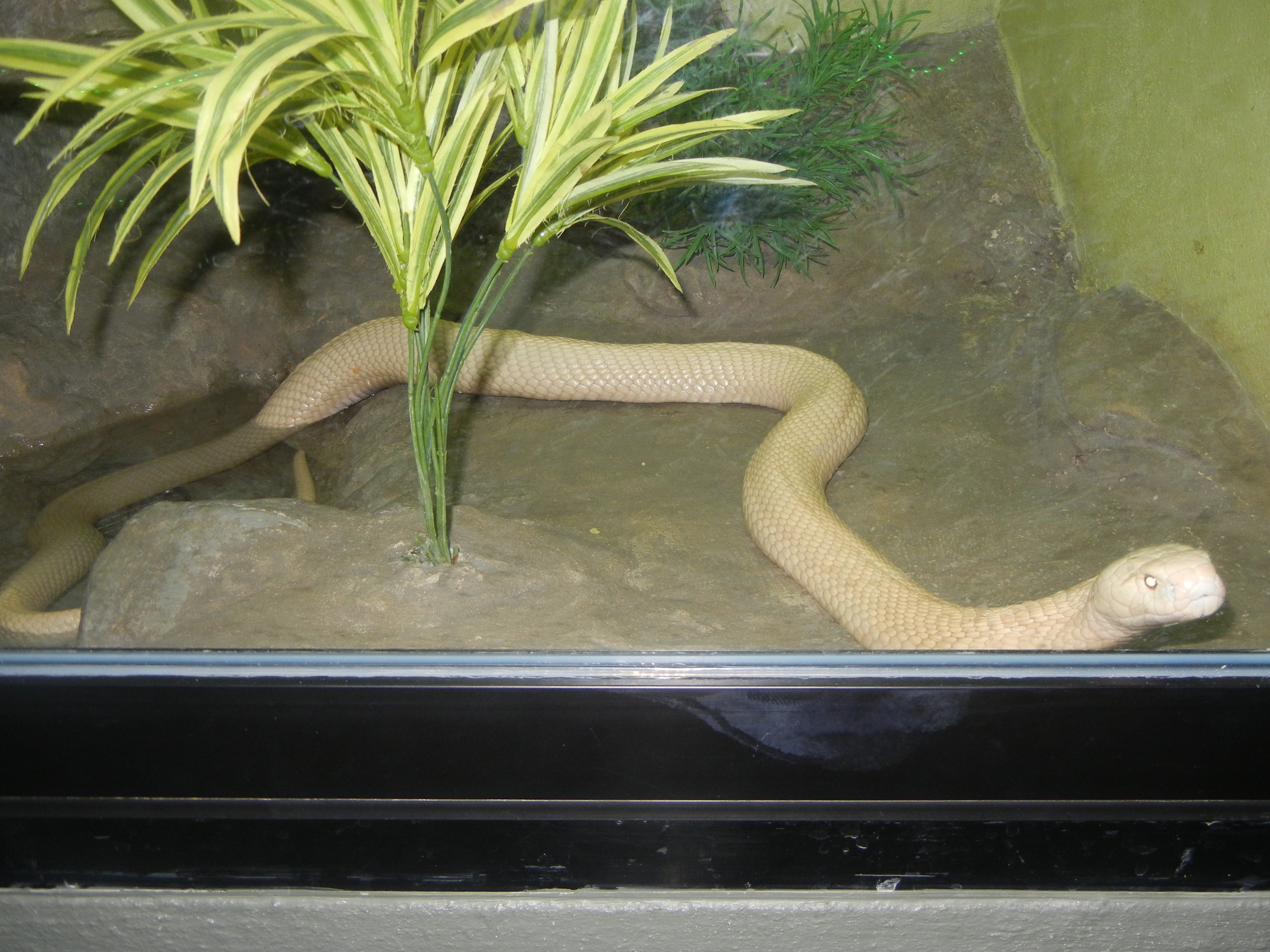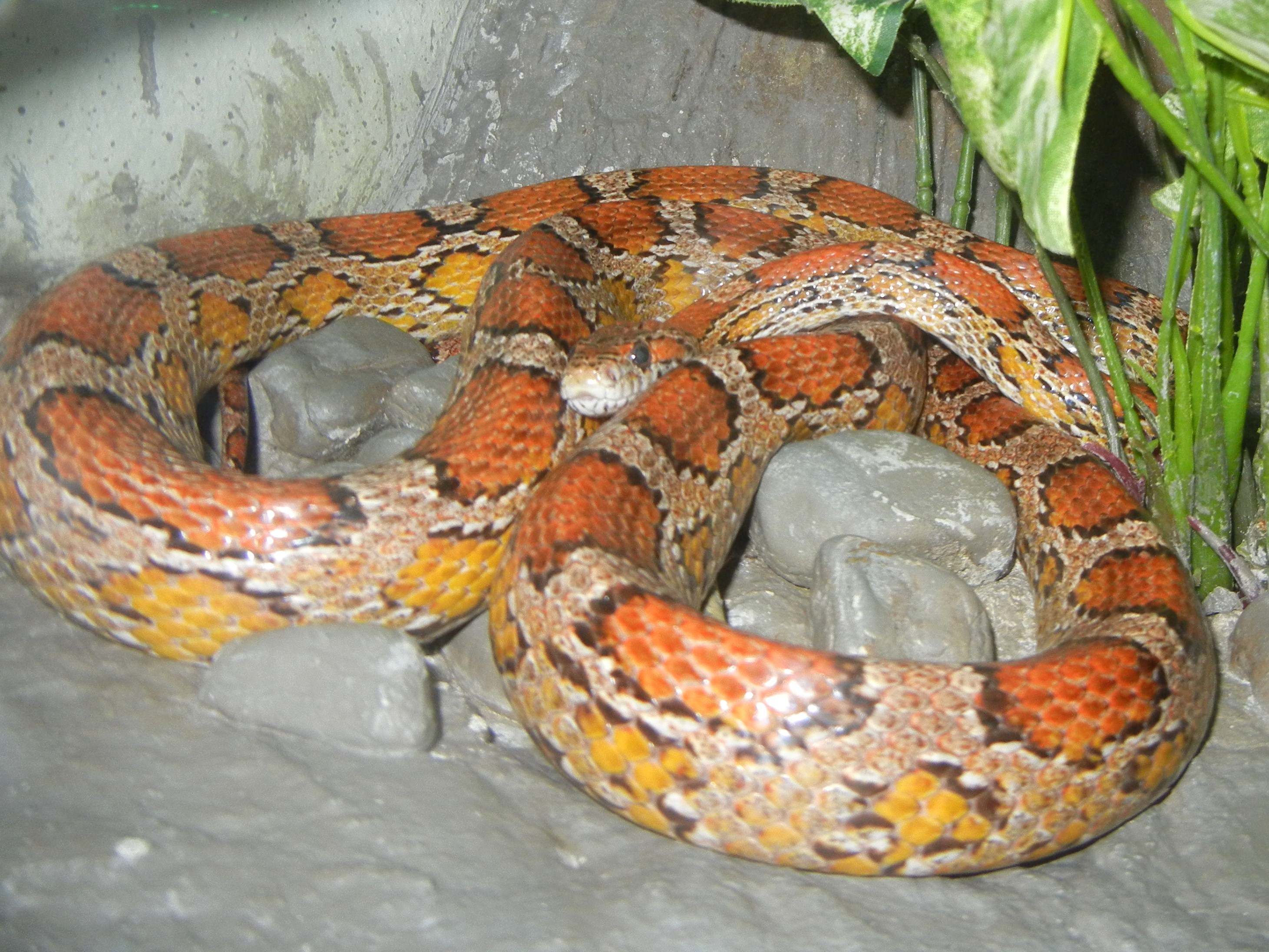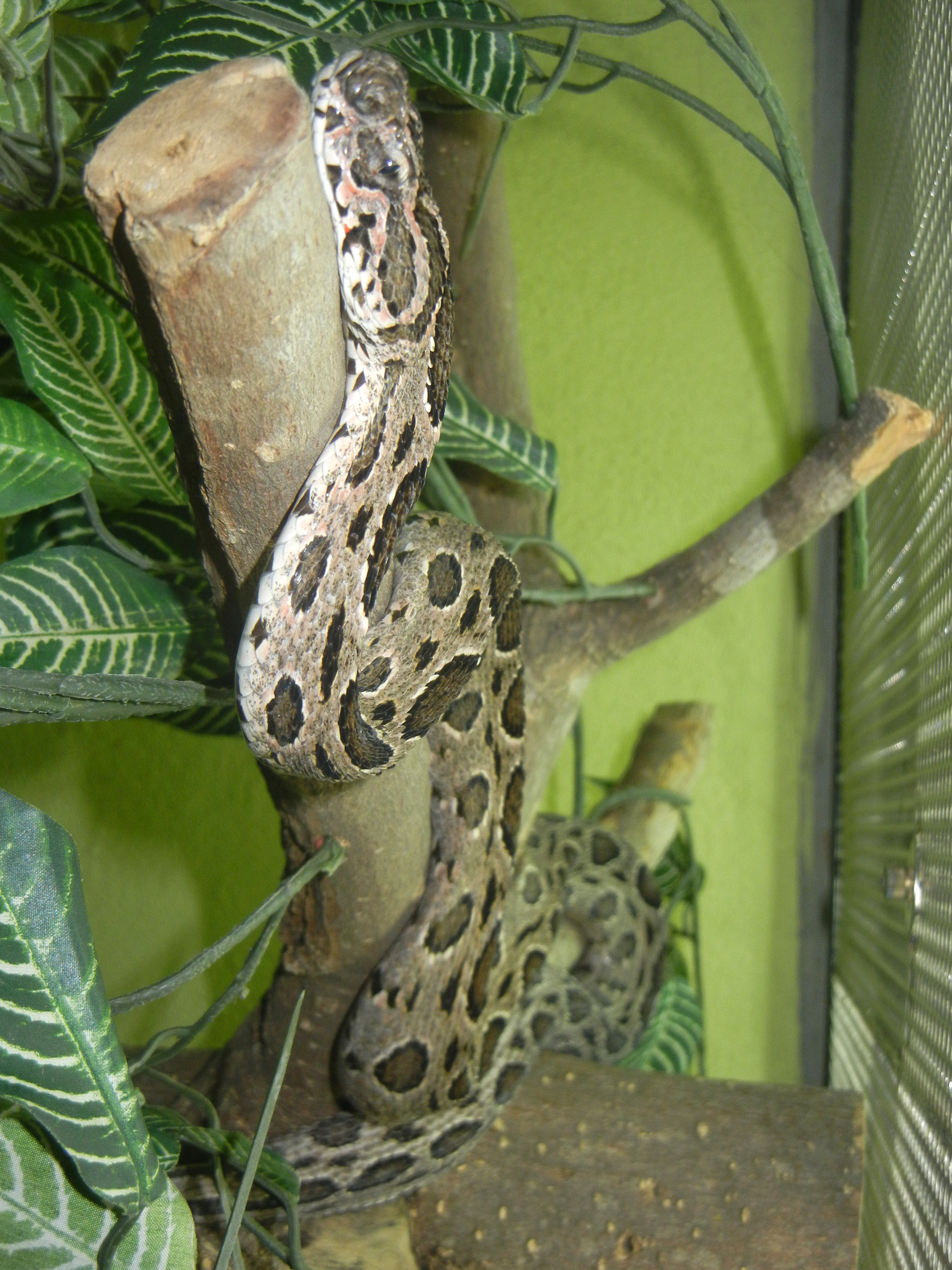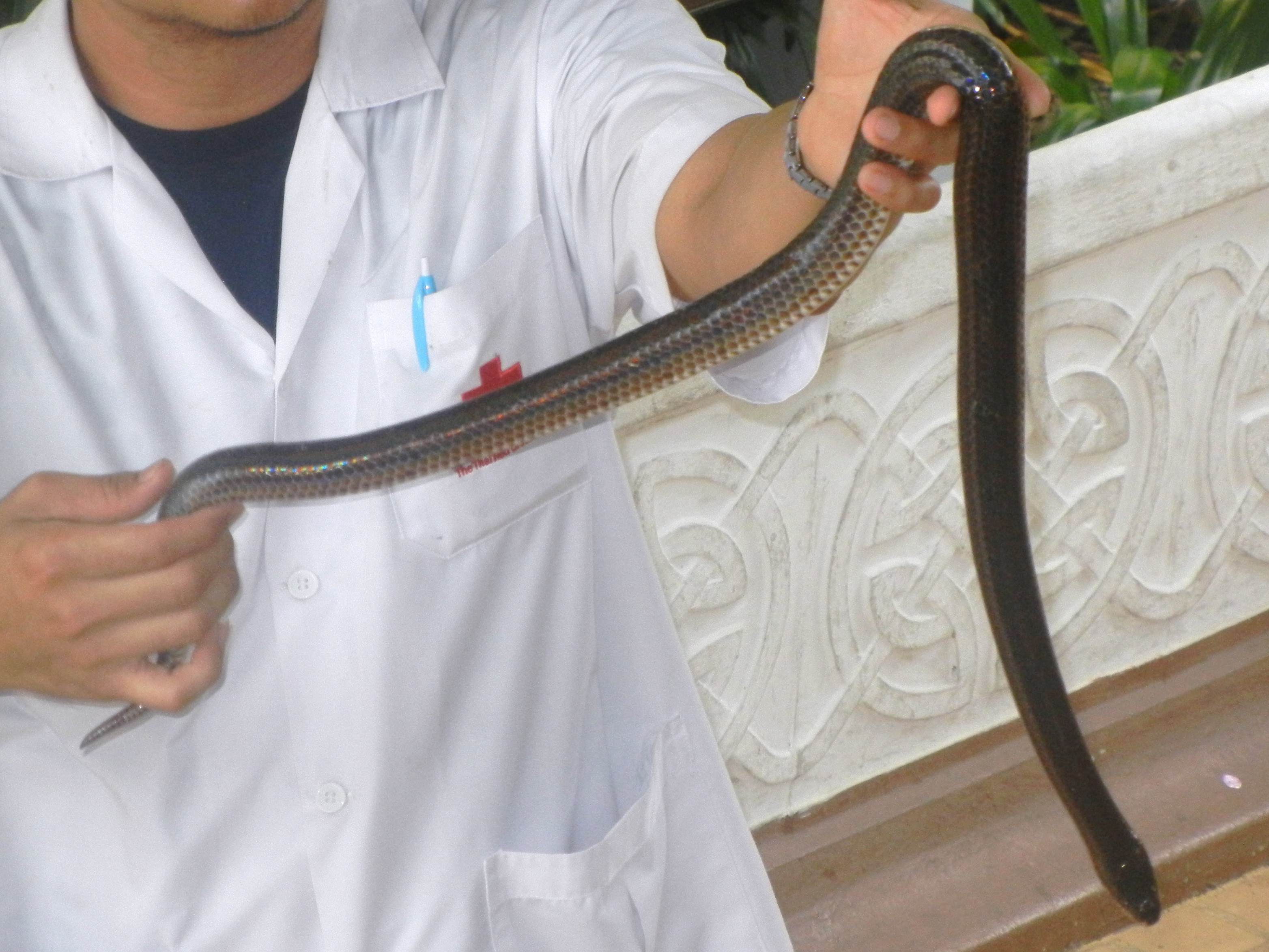No, no, no, no, no — this post is NOT about lawyers (or the Obama administration), these people are undoubtedly even more lethal and far less cuddly than the ectothermic creatures that I write about today.
On Saturday, we ventured about one mile down the road to visit the Snake Farm at the Queen Saovabha Memorial Institute. The Institute and Snake Farm were founded in 1923 by the Royal Family who understood that venomous snakes were a public health hazard.
The Snake Farm is run by the Thai Red Cross and one of its missions is to make antivenom. Antivenom is made by milking (or extracting) the venom from a particular type of poisonous snake — (how would you like that job?) — diluting the venom, and then injecting it into a horse. Through an immune response, the horse produces antibodies in its blood. Blood plasma is extracted from the horse, purified, and tested for efficacy and safety. This is how the antivenom is made that is used to treat those who are bitten by a poisonous snake.
Not surprisingly, I suppose, the Thai Red Cross also runs a horse farm (in Hua Hin) so that it can produce the antivenoms. The horses are used for antivenom production from age 4 to 12, and they are kept at the farm even after they are too old to be blood donors.
Thailand is home to nearly 200 varieties of snakes, 60 of which are venomous (now I am having a better understanding of that hazard premium I get). The venom from different snakes — cobras, vipers, kraits, and sea snakes — kills the prey through various means.
Venom from cobras and kraits is neurotoxic — it affects the central nervous system, slowly paralyzing the skeletal and peripheral muscles. Without treatment, death can occur from respiratory failure. Viper venom is hemotoxic — it destroys blood cells, prevents clotting, and causes tissue damage. Without treatment, death can occur from cardiovascular failure and from bleeding. Sea snake and sea krait venom is myotoxic — it rapidly disables muscle contractions so that the snake can more easily hold onto the prey. Without treatment, death can occur from renal failure.
The Snake Farm has both outdoor and indoor serpentaria that contain at least 50 species of snakes from all around the world. The size and coloring of the various snakes are quite impressive. Most of the snakes were not very active when we visited; they were often coiled in their house (for many a partially broken, upside-down clay garden pot), hidden in a corner or under a plant, or hanging onto a branch in a tree.
In addition to the snakes, the farm has a museum that provides a lot of information on snakes. Many dead snakes are exhibited in glass tubes filled with a liquid preservative. There is information about reproduction; the digestive system; internal organs; and the skeleton, skull, skin and scales. About 70% of snake species lay hard-shelled eggs in which the embryo develops before hatching. The other 30%, which are called ovoviviparous, have young that are born covered only by a soft tissue from which the baby snake releases itself almost immediately.
We saw a snake handling demonstration where eight snakes — three or four of which were venomous — were exhibited. After understanding how deadly these can be, it was easy to understand why the handlers were so careful with these potentially deadly creatures. Some snakes have relatively poor eyesight, so apparently you can be safe by just standing still until they leave on their own. Others, however, have a very keen sense of smell, so the last thing that you want to do is just wait around. Seems like a conundrum to me since I would prefer a simple rule that tells me either to stand still or to “Get Out of Dodge.”
The first snake that they brought out was a King Cobra. This snake is 10 to 15 feet long and is the deadliest snake because of the volume of venom that it injects into its prey. The second snake out was the Siamese Cobra. Its venom is more toxic than that of the King Cobra, however it injects less into its victim. Both cobras have hoods, but the one on the Siamese Cobra is particularly impressive. I hope to never run into either one outside of a well-controlled environment.



A pit viper was the next snake that was displayed. This snake clung to a branch and it is so green that it must simply disappear amidst the foliage. The viper was followed by a Mangrove Cat-Eyed snake, a non-venomous snake with yellow markings. Many have green pupils, which is why it is called cat eyed. Apparently, it can be confused with a Banded Krait, which is a highly poisonous snake. All I know is that if I see anything that looks like either of them, I will make like Snagglepuss and quickly “Exit, stage left!”
The next two snakes shown were rat snakes. As their names suggest, they eat mice and rats (as well as frogs, toads, and birds) so they are quite common and, indeed, popular in the rural, agricultural areas. The first was an Indian Rat Snake and it looked easy to handle. The next was a Copperhead Rat Snake that moved very fast and quickly. As you can see below, it looks like it would deliver a nasty bite.
The penultimate snake in the demonstration was a Sunbeam Snake. This snake lives primarily underground, however when it is in the sunlight it glistens. The snake gets its name from the iridescence of its scales. In the direct sunlight, which was absent on the overcast day that we visited, the scales apparently scatter sunlight like a prism.
The final snake was a Burmese Python, one of the largest snakes in the world. This species normally grows to be about 12 feet long and can weigh up to 100 pounds. The snake that was shown was about 7 or 8 feet long and docile. The handlers let anyone, including young children who watched the show, come up and hold it. I took advantage of the opportunity and I think that I was more excited about it than the snake. The snake was quite heavy and very dry to the touch.

Until we visited the Snake Farm, I had luckily not seen a snake of any sort — viper, cobra, rat snake, python, or krait — during my time in Thailand. Nevertheless, I take some comfort in knowing that the Thai Red Cross has antivenom serum less than 2 KM from our apartment.

Kop Khun Krab!
Khun Kurt
Copyright © 2011-19 Kurt Brown. All rights reserved.
























The snakes look great and you look comfortable with you new friend.